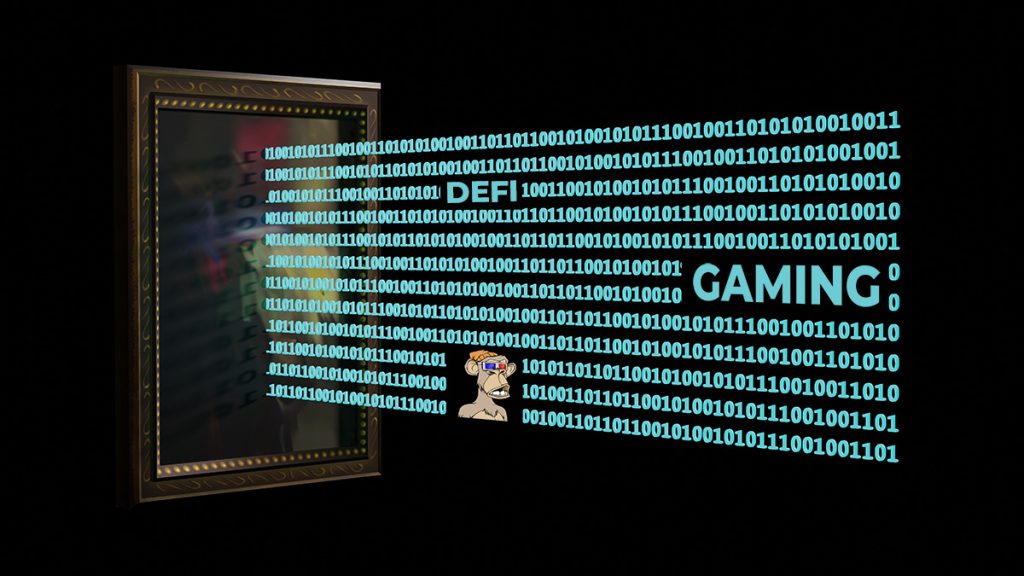
In today’s world, we collectively become obsessed with something, and then suddenly, it disappears from mainstream media. Look at fashion trends; one day, skinny jeans are all the rage, and then the next, everyone talks about the baggiest pair ever seen on runaways. Sometimes, these discussions seem to come full circle. I mean, we have people today looking to bring back fashion from the 2000s (please no). And the digital sector is not immune to this. Non-Fungible Tokens (NFTs) almost broke the internet when they first went mainstream, with everyone wanting to own or make one. In fact, the industry saw the participation of big names such as Warner Bros with their LOTR NFTs. However, today, it seems that the buzz has died down, and unless they are their niche interest, people seem to have moved to bigger and seemingly better things in blockchain applications. Let’s talk about them!
Encrypted Variable Tokens
While NFTs are seemingly disappearing from the public eye, the truth is that they are evolving. They are effectively evolving into new blockchain applications: the Encrypted Variable Tokens (EVTs).
What’s That?
EVTs are an improved form of a unique identification code and metadata that can give blockchain-based cryptographic assets access to encrypted variable functionality. In layperson’s terms, while NFTs are static—once minted, the NFT does not change—EVTs are dynamic, having invariable and variable components simultaneously. As the owner, you can update and modify the code, thus enhancing the piece of digital media. So, once you purchase the EVT, you will be able to modify parts of it as you please. Afterward, if you sell it, the new owner can then alter it to their liking as well.
What’s the Big Deal?
The ability to increase the token’s financial value by the owner putting their own creativity and skill into it is a great selling point. It gives the industry a lot more credibility and “usefulness” because its value derives from copyrights. In addition, the metaverse is no longer some fantasy a writer had in a dark bar on a random Tuesday while contemplating their life choices; it has become a reality in which many not only are interested but also have invested. That said, integrating EVTs in Web3 could mean more dynamic avatars. Users can then birth, create, raise, change, and even have a set death date. Through this nugget of technology, the limit of creativity is the sky, or rather the meta-sky (get it?).
Play-to-Earn Gaming Model
Play-to-earn gaming model is another one of the blockchain applications gaining traction. In the gaming world, game designers and owners typically enjoy a one-sided financial relationship where they reap the benefits while players merely have fun or are persuaded to keep spending money. A new paradigm, however, is taking shape: the play-to-earn model. This model enables players to acquire in-game benefits by merely participating. Additionally, rewards include but are not limited to blockchain-tokenized digital assets, cryptocurrencies, and in-game resources. This model creates an economy of its own where gamers have ownership of in-game assets. Additionally, it allows them to increase the asset’s value through gameplay.
How Does It Work?
Each game offers monetary incentives to play and advance, and the player is typically required to repeat specific actions over time. Three main methods generate income.
1. In-Game NFTs
Non-Fungible Tokens may have left mainstream media, but that is not the last we hear of them. Each token may represent a character, item, or game collectible in the play-to-earn model. Players earn these through gaming or trade.
2. In-Game Crypto
These games offer the opportunity to earn cryptocurrency—which can improve economic empowerment—through completing daily quests or battling monsters and other players.
3. Staking
Players can lock up NFTs or cryptocurrencies in smart contracts in some play-to-earn games to earn rewards. These contacts are protocols created to enable, validate, or enforce digital contracts without the involvement of a reliable third party.
What Does Blockchain Have to Do with it?
Remembering that the play-to-earn model is not a brand-new idea is crucial. Many online role-playing games feature markets or auction houses using fiat money that gold farmers run. Cryptocurrency game assets, however, reside on a blockchain. As a result, ownership and legitimacy are simple to establish. A blockchain network’s security guarantees that assets are never copied, compromised, or used unfairly, like in conventional games. Most importantly, blockchain games make in-game items more valuable by making them scarce. Things connected to the blockchain cannot be duplicated in a way that lowers their value.
Final Thoughts
While the popularity of NFTs has faded for the average joe, it remains a stepping stone for blockchain technology and digital assets. And from our vantage point, we can see that the road ahead leads to a successful transfer of assets into the decentralized world. With the world increasingly integrating blockchain applications, the upcoming generation should prepare for a cultural reset. One that perhaps rivals that of the cellular device.
Inside Telecom provides you with an extensive list of content covering all aspects of the tech industry. Keep an eye on our Web3 section to stay informed and up-to-date with our daily articles.